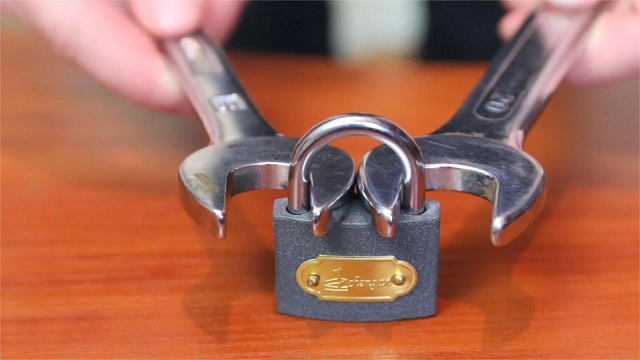Why Can’t You Open Your Padlocks
2023-11-22 09:22

People may meet the situation that they can’t open the padlock of boxes or other cases when they are going to pick up inner items. Some people think that the padlock may be broken. While, there are many reasons that makes the padlock not opening. You can read this guidance and know main reasons that your padlocks are not open.
Main Reasons that Your Padlocks Are Not Open
Blocked Keyway
The most common reason for a padlock keyway being blocked is because a key broke off in the lock. Besides the key, people will sometimes stick foreign objects into the keyhole. This may not be visually apparent if objects have been forced into the recesses of the keyway, but you will notice that the key will not fully insert.
If the keyway is filled with material that breaks up such as wood, dirt, foam, etc., the lock will need to be cleaned for it to be fully restored. There is also the additional time it will take to remove all the pieces as the substance breaks apart. If you are in an emergency situation, you may not have the time to pick the fragments out of the lock and will need to cut the lock.
In the most severe cases, whatever was put inside the keyway can move up from the plug to the upper pin chambers and will not be cleanable. Not every padlock has a key. In fact, many bike locks and locker locks use combination wheels. These wheels can get blocked from moving or bind up.
Jammed Shackle
If a padlock won’t open due to a jammed shackle, the key should still turn in the lock. This will not always be a full turn, but the cylinder in the padlock should rotate at least partially. If the cylinder can spin continuously without meeting resistance, there is likely something else wrong with the lock (this could be the sign of a broken actuator).
The shackle is going to be jammed as the result of a blockage in the shackle hole, or broken component, which is causing the locking pawl not to retract. The locking pawl might not be fully disengaged, or it is disengaged but the shackle is binding on something else. You likely encountered a door lock jammed in this way before, when the deadbolt will not retract.
A shackle may be jammed due to rust, but we will talk about that more specifically in another section. In this instance, the padlock won’t open because of other forms of blockage. This might be dirt, metal shavings from grinding parts, etc. Now there is an excess of material within the lock which is not allowing parts to move or slide past one another properly.
Broken Actuator
A reliable sign of a broken actuator is when a key keeps turning in the lock. Alternatively, when a padlock won’t open because of a broken actuator the key may turn correctly, with no resistance, but stop at the appropriate rotational point. The symptom indicative of the broken padlock will depend on what precisely is broken.
Regardless of what has broken, the underlying issue is that there is no longer a connection between the keyway and the device releasing the shackle. The shackle stays in place via two locking pawls which retract when the key turns and influences the actuator. If any part of that process breaks down, the shackle cannot release and the padlock won’t open.
This issue could be similar to how to fix a stuck door latch if the locking pawls are spring-loaded and free-moving. In the case of high-security padlocks, the locking pawls will act more like deadbolts, requiring the actuator to open the lock. You might be able to interact with the actuator by reaching a tool through the keyway, but this is not always possible.
People can judge the situation of padlock according to mentioned reasons in the guidance. And you can also use lock pick set to open padlock by yourself. Lockpicking is a really useful skill in your life.
 Promotion: 5% Discount Code: 5vip
Promotion: 5% Discount Code: 5vip